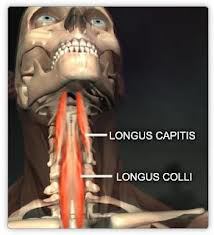Blog
Relieve Chronic Neck Pain
Tags: chronic pain, chronic pain causes, chronic pain management, chronic pain relief, chronic pain symptoms, chronic pain treatment, natural pain relief, neck exercise, pain management, pain relief, pain treatment, physical therapist Prescott, physical therapists Prescott, Prescott physical therapy
Relieve chronic neck pain with one simple exercise.
Neck pain can be the result of joint, muscle, disc, or nerve dysfunction. There is no shortage of treatment options with pain medications, muscle relaxers, and joint manipulation (having your neck cracked) being common. These approaches potentially offer temporary relief though not a long-term solution. There is ONE common finding in individuals with chronic neck pain, with ‘chronic’ meaning pain lasting three months or more. The ONE common finding in individuals with chronic neck pain is impaired strength and endurance of the deep cervical flexor (DCF) muscles. These muscles are underneath the larger, more prominent muscles that can be seen and felt.

If these muscles are consistently and specifically trained to increase strength and endurance, neck pain decreases. The correlation between decreased neck pain and improved deep cervical flexor strength & endurance is so pronounced that the stronger these muscles become, the MORE neck pain decreases. This has consistently been shown in studies.
The exercise looks simple but is not easy to do the correct way. Lie on your back; you can use a small pillow so your neck is in a comfortable position. While keeping your head in contact with the pillow or surface you are lying on, gently nod your head. It should look like a chin tuck.

Gently move your chin towards your neck. The key is nodding your chin towards your neck WITHOUT the large muscles on the front of your neck flexing. Place your thumb and fingers over the muscles in front of your neck and gently nod. If you feel these muscles contract at all, you are NOT using the deep cervical flexors. This takes some people a week to do the correct way. When you can nod your head without these muscles contracting, hold the position; start with five second holds. When you are able to complete 10 five second holds, increase the hold time to ten seconds. If at any time during the hold you feel the muscles under your fingers contract, terminate the hold, regroup and start over.
Individuals with chronic neck pain have consistently been shown to have decreased DCF strength and endurance. When this is corrected, pain levels decrease. This has been shown consistently in the literature. The key is committing to the exercise and consistently completing it EVERY day.
Here is the program to be completed daily:
Week 1: 10 five seconds holds
Week 2: 10 ten second holds
Week 3: 15 ten second holds
Week 4: 20 ten second holds
Week 5-6: 25 ten second holds
Be sure to rest 5 seconds between repetitions. Do this one exercise daily for six weeks and watch your neck pain decrease, if not disappear completely. The maximum amount of time that this exercise will take you is 5 minutes, so the ‘no time’ excuse doesn’t apply.
This video shows the DCF exercise without the hold. The chin tucked position needs to be held as described. This video shows how subtle the motion is. You can also see how there is NO visible contraction of the neck musculature; this is because the deep cervical flexors are doing the work.
For those of you who would like more information on the effectiveness of DCF training on reducing neck pain, below is a list of research papers that have been published on the topic.
Falla, Deborah, et al. “The Change in Deep Cervical Flexor Activity After Training Is Associated With the Degree of Pain Reduction in Patients With Chronic Neck Pain.” The Clinical Journal of Pain 28.7 (2012): 628-634.
Falla, Deborah, et al. “Association between intensity of pain and impairment in onset and activation of the deep cervical flexors in patients with persistent neck pain.” The Clinical journal of pain 27.4 (2011): 309.
Jull, G. A., et al. “The effect of therapeutic exercise on activation of the deep cervical flexor muscles in people with chronic neck pain.” Manual therapy 14.6 (2009): 696-701.